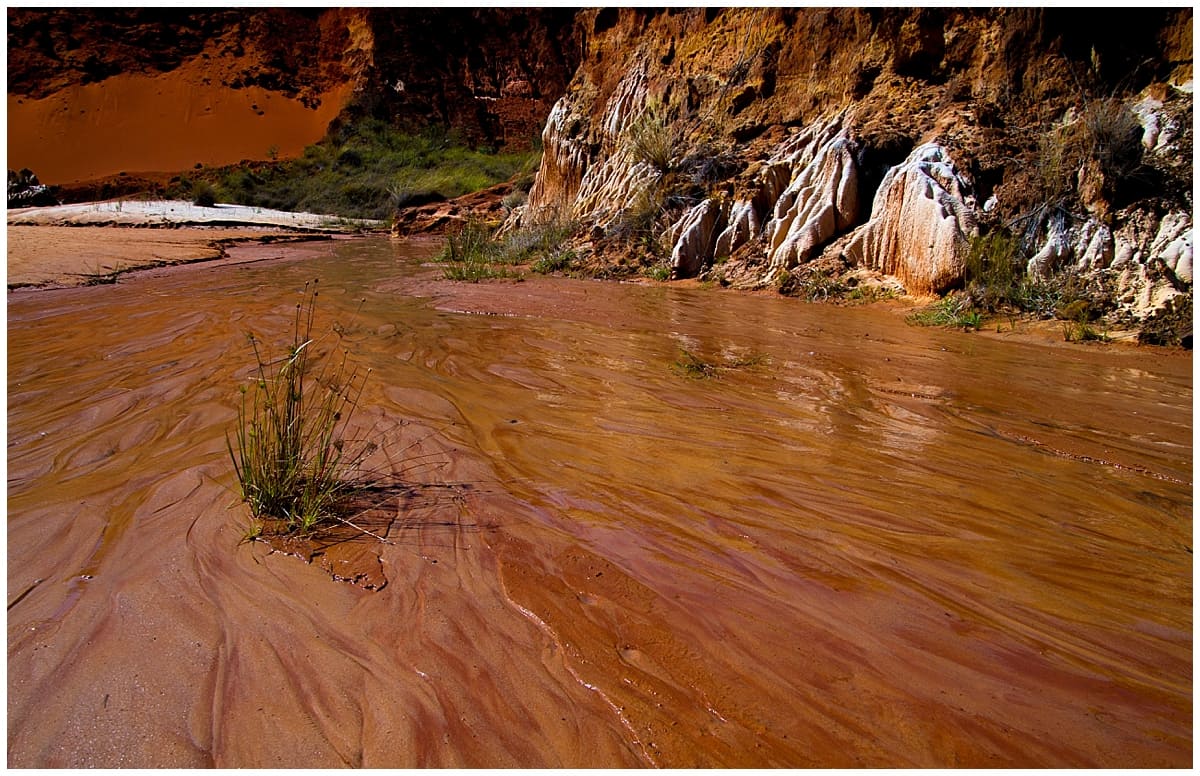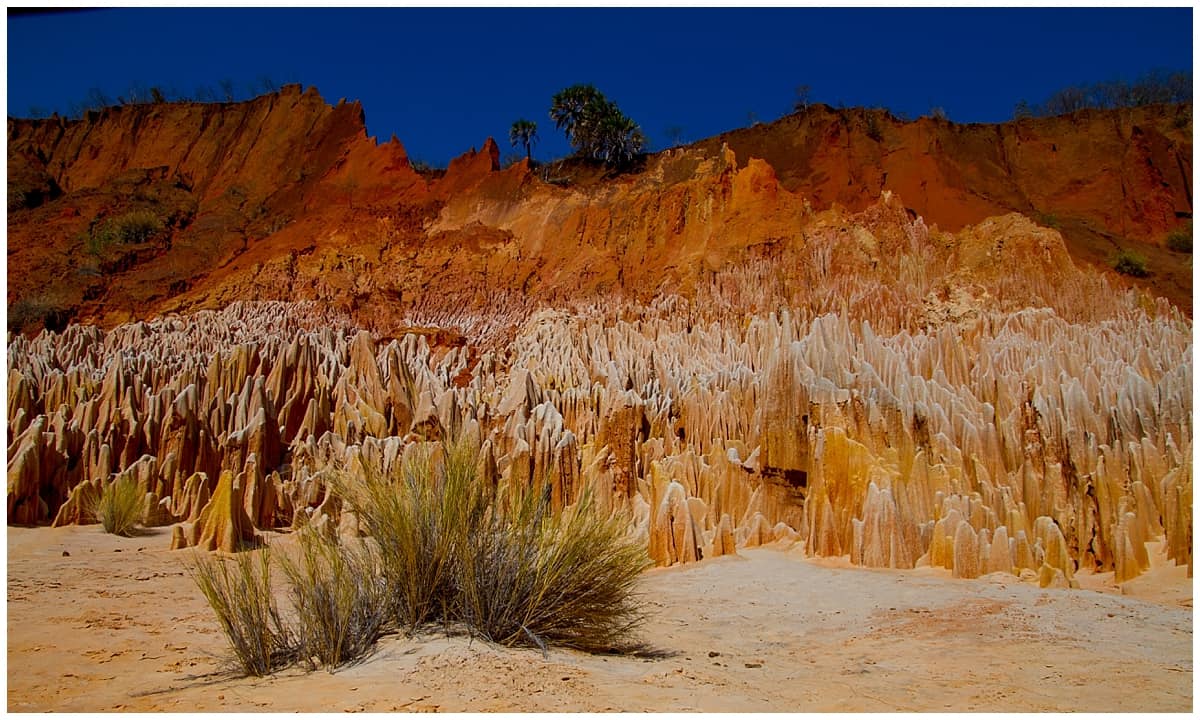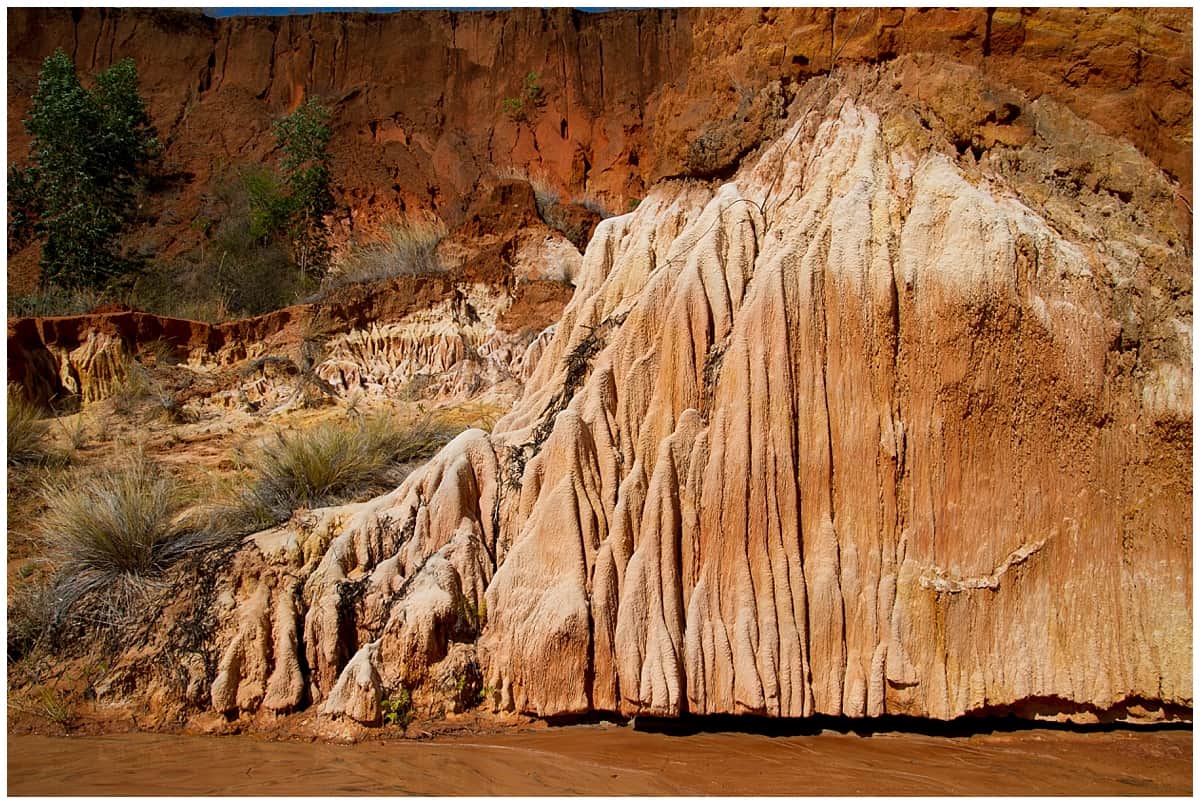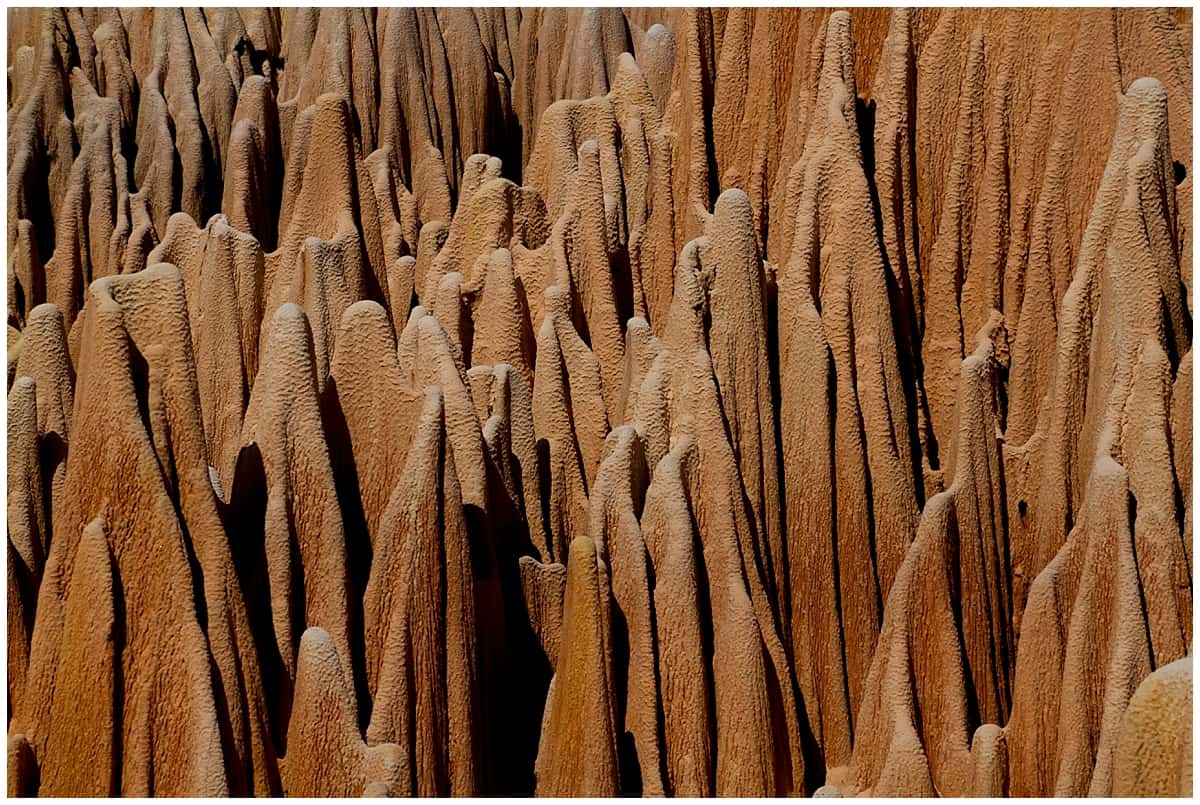The red tsingy of Madagascar spike the air with striking beauty and a sense of majesty. While most travellers head to see the well-known grey formations at the Tsingy Bemahara National Park, a trip to the quieter Tsingy Rouge Park reveals these blood-red cathedrals of nature in an otherwise empty landscape. Here’s what it’s like…

The Red Tsingy of Madagascar: Visiting the Tsingy Rouge Park
It snaked towards us slowly. A scarlet, silted, rust-red, blood-red, iron-tinged flow. The water seeped around the edges of my boots, my footprints swallowed up within seconds.
It visibly stained my soles.
Up ahead, I saw two men walking, the two men who were travelling with me. But no other soul was there.
Their silhouettes appeared brush-like and black, all wrong against the sharp contours of the rock, like thick inky strokes across a crystal-gel display.
The heat, I’ll admit, had left me faint.
Recommended reading: The Beautiful Beaches of Madagascar

The Tsingy Rouge Park
Here, like a cavernous amphitheatre riven into the ground was a sheer rock-face of flurried flutes and rivulets, spikes, sharp edges, the natural equivalent of Picasso’s interpretation of a majestic cathedral organ.
Midway between the northern towns of Joffreville and Antsiranana (Diego Suarez), this was the dry, dead dust of the Tsingy Rouge Park.
The curving swell of cream-green mountains dipped into this astonishing crescent of sharp red rock. The drive had been tough, the road windswept, the path teetering.
But now we were here.
Boots swallowing up sand.
Red rivers running by.
And staring, simply staring in wonder at this planet of ours that never runs out of its capacity to stun, its ability to surprise.

Grey Tsingy in Madagascar
Only days ago I’d seen my first ever tsingy: grey flutes of limestone rock that grazed my palm as I climbed high among the lemurs at Ankarana, sweet smoke in the distance and egrets and kingfishers nearby.
Apparently, in Madagascar, grey tsingy are commonplace.
It’s the red rock tsingy that stands out.
Both, of course, mesmerised me. But there was no doubt that this red blazed further, reached deeper, lasted longer. It penetrated the limits of the photoreceptors lining my eye with a redness the camera just couldn’t seem to contain.

The Science of Tsingy
In scientific terms, red tsingy is a stone formation of red laterite formed by the erosion of the Idaro River in the region of Diana, in northern Madagascar.
In other scientific terms, neuroscientists still don’t truly understand beauty. What makes one site a worthy sight, another one to just pass by.
But one thing we do know: that change, contrast, the idea of difference excites our neurones more than those things that remain constant, that seem the same.
So perhaps that sheds light on why this place is so beautiful.
Perhaps it does not.
But most of all, I suppose, it really does not matter.
It simply is.
What Does the Word Tsingy Mean?
In Malagasy, the word tsingy means “walking on tip toes” or “the place where one cannot walk barefoot.” Which, let’s face it, is quite apt.
How to Visit the Tsingy Rouge Park
The park is a two hour drive from Antsiranana (Diego Suarez,) on a road that isn’t in the best condition, followed by about 30 minutes of (true!) off road driving. Think of it as a bumpy adventure!
You can brave the drive yourself or you can let someone else do the work by hopping in a taxi.
The entrance fee is 10,000 Ariary per person and is paid at a small house at the start of the off road leg of the journey.
More About Travel in Africa
- The best places to visit in Africa: how to build your bucket list
- Namibia and the oldest desert in the world
- The best beaches in Madagascar
- What safari guides really fear in Botswana’s Okavango Delta
- How the red tsingy in Madagascar are the perfect antidote to travel overload.
- The real pride rock
- Why Ouirgane valley in Morocco deserves your time
- The highs and lows of driving in Morocco
- What you need to know about trekking Kilimanjaro
- Rwanda or Uganda for gorilla trekking?

Wow!! This is simply amazing!! You are so right, the world never ceases to amaze me. Thanks for sharing these exquisite pictures.
Thank you! It is such a stunning place – and I was surprised I hadn’t heard of it before.